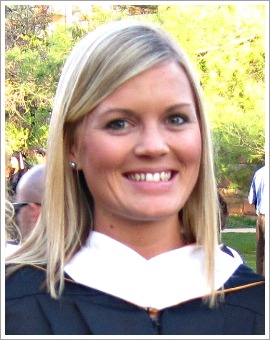Katie Dutro’s unique fifth grade classroom requires her to draw from previous educational experience to effectively teach her students.
Katie Dutro has always felt drawn to the teaching profession, even from a young age. Teaching runs in the family, and even during the times when she was out of school, Dutro spent hours in the classroom.
“I’ve always been around schools, helping my mom set up her classroom, and going in her classroom when I had a day off my school. So I kind of felt like I really didn’t have a choice,” she says with a laugh.
Years later, Dutro now leads her own fifth grade class at Thornton Elementary School in Colorado. But glancing around Dutro’s class, you could describe it as anything but a typical fifth grade classroom. Dutro teaches linguistically diverse students, meaning her classroom is made up of many kids from different nationalities and learning levels.
Dutro teaches ELL students, or English Language Learners. These students speak a variety of languages, such as Spanish, Russian, and Hmong, meaning Dutro must understand how to best present fifth-grade material in a way that makes sense to them.
Diversifying Our Classrooms
As America continues to diversify, the make up of our schools will change as well. English Language Learners are quickly becoming a focus in the classroom. Take a look at some facts surrounding ELL students in the United States.
- Between 1980 and 2009, the percentage of students who spoke a language other than English at home rose from 10% to 21% of the population in this age range.
- Between 1980 and 2009, the amount of ELL children who spoke English with difficulty decreased from 41% to 24%.
- Enrollment of ELL students has increased over the years from 90% to 93%.
ELL students are split into several categories, and Dutro teaches NEP (Non-English Proficient) and LEP (Limited English Proficiency) students. Because each student has different English speaking abilities, Dutro must adjust her teaching style constantly to ensure learning takes place.
“I love working with kids and I love being able to be a positive energy in kids’ lives, and helping them to grow and discover who they are as individuals,” Dutro said. “And I think it’s important that teachers give kids the power to do those things.”
Dutro worked hard to get the chance to teach this unique group of students, and not every teacher has the tools necessary to effectively teach them. In fact, Dutro was specifically assigned this learning group thanks to her master’s degree in linguistically diverse learners.
Her master’s program focused heavily on how to best assess students with limited English speaking abilities, allowing her to correctly gauge how her teaching styles affect her students. Think about it: even if the students are actively learning English, they’re also learning the same math, social studies, and science content as other more traditional fifth-grade students.
“One of the challenges that we face in my school is that I had kids who were brand new to America and they’re still being assessed in the same way as native English speakers,” Dutro said. “So the question is ‘What are we really assessing here? What is the data really showing me? Is it showing me that they know their math, or is it showing me that they can read what the question is asking?’”
In order to effectively teach her students, Dutro uses many strategies and techniques she gained an understanding of through her master’s program. When working with ELL students, Dutro frequently uses “frontloading strategies.
Frontloading refers to a teaching technique where Dutro explains the subject of a book or lesson before students begin to read. That way, students have a general understanding of what kinds of words to look out for.
“We talk about what a book is about before we read it,” Dutro said. “You give kids time to turn and talk with a partner about it, and they have time to ask questions if something comes up, and lots of visual support around the classroom.”
To implement many of her assessment and ELL teaching techniques, Dutro’s master’s program paired her with a mentor teacher. Her mentor observed her classroom once a week, and allowed Dutro to report back to her master’s instructors to get feedback and ask questions about teaching linguistically diverse learns.
“Teaching while taking a master’s program – one week we might talk about something in my [master’s] class, then I turn around, try it in my classroom, and then come back to class and go, “Oh I tried this, this worked for me, or didn’t work for me, what are some suggestions that you guys have?”



